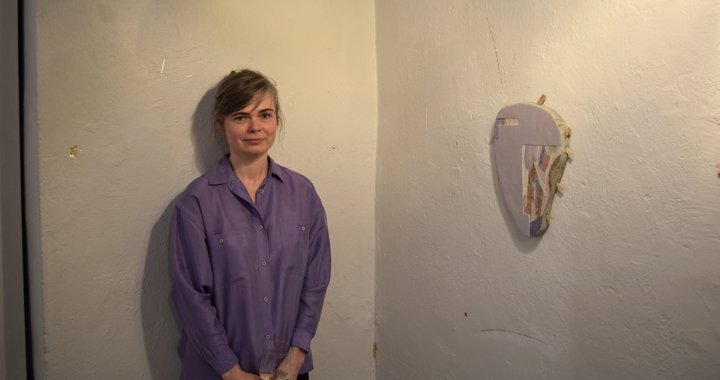
Colouring Over the Lines
Express interview with Artist Inga Meldere on her exhibition “House by the waterfall or colouring books for adults” at the Temnikova & Kasela Gallery in Tallinn
Agnese Pundiņa
10/05/2016
Translated by Laima Ruduša
Through June 18th, Latvian artist Inga Meldere’s solo-exhibition “House by the waterfall or colouring books for adults” is taking place at the Temnikova & Kasela Gallery in Tallinn.
Colouring books, which are mostly associated with children, have become increasingly popular among adults in the last decade. From one aspect this phenomenon is characterized as a therapeutic process, but from another, it is considered the marginalization of creative activity. [1] In the exhibition “House by the waterfall or colouring books for adults” Inga Meldere brings forward the colouring book and ties it in with her own artistic activity, unravelling the question – how does a person identify oneself when coming into contact with an image, does the colouring process allow involvement in its re-contextualization, or does it only grant the passive following of lines.
Inga Meldere graduated from the Restoration Department at the Art Academy of Latvia and the Pedagogy and Psychology School of the University of Latvia. In terms of her education, we must also mention the Jaan Van Eyck Academie in Maastricht. Precisely these last two mentioned educational institutions shaped her artistic thinking in a certain way. Inga Meldere has participated in residencies and exhibitions in both Latvia, and abroad. She currently lives in Helsinki, so through Skype we discussed what is to be seen in the exhibition and what meaning colouring books hold.
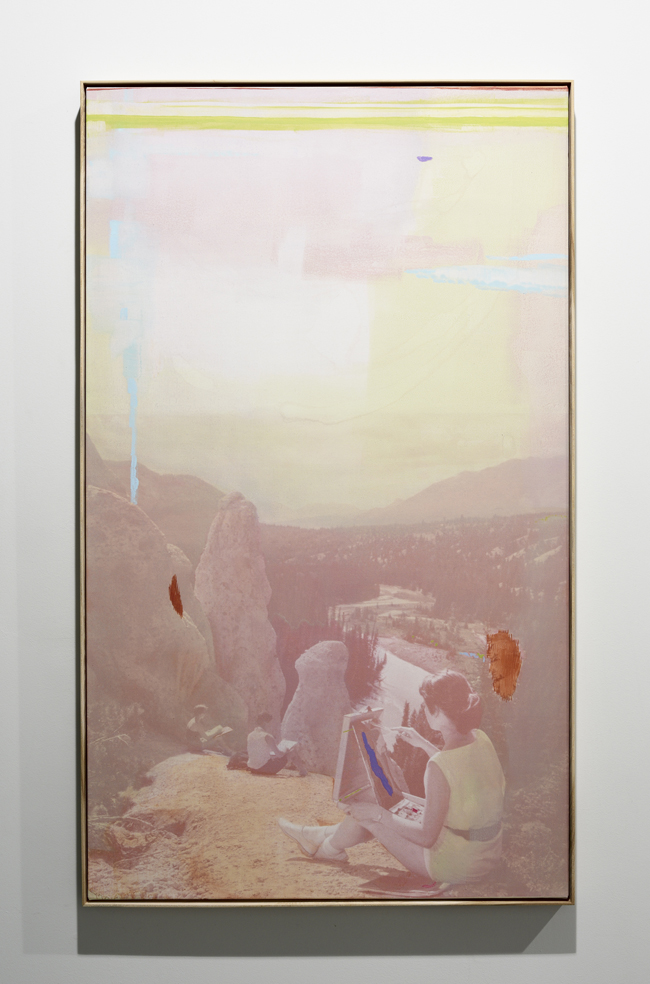
Inga Meldere. Students painting some of the remarkable scenery in the park. 2016. Digital print, oil and acrylic on canvas. 120 x 75 cm
What will your exhibition “House by the waterfall or colouring book for adults” in Tallinn be about?
The basis is an image, which seems very logical, if you have followed the development of my artistic practice. When working with my early works, often as the resource, or as the source of inspiration for the resolution to a painted composition, I used my grandfather’s photo archive. In the refinement process of personal and collective memory, the situations revealed in my grandfather’s photographs served as a starting point to new situations, the sequels to which were grappled with on canvas. I thought it was important to use the presence of direct imagery and to include that in the Exhibition “Bērzkalni” in Helsinki last year. Then I worked with pairs: a painting and a digitally processed printed fragment of a photograph. In combining them together, I already staged a more elaborate situation or story. A painting served as a continuation; a logical or absurd addition to the photo fragments or vice versa.
Working with the latest exhibition, the reference to an image is interpreted in a much wider context than simply processing personal memory. Or with references to art history, for example, and their relation to a “personal archive”, people speak about a way that known images can exist alongside private memories and experiences.
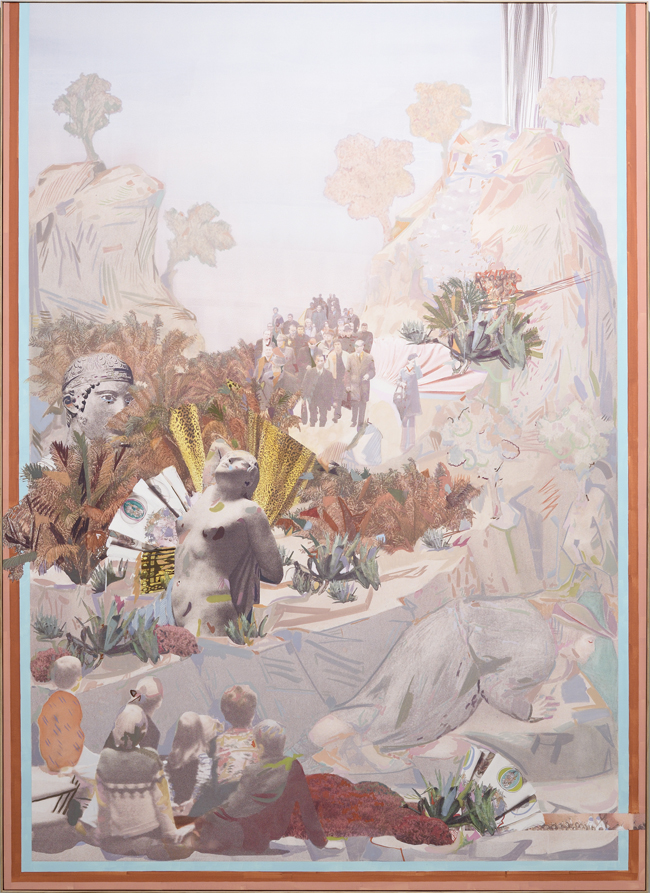
Inga Meldere. “Māja pie ūdenskrituma” (“A House by a Waterfall”). 2016. Collage, digital print, oil, acrylic on canvas. 220 x 160 cm
If you describe the process and methods themselves practically, then the work took place with and around a selection of “found” archive images, which were processed digitally, creating compositions or image collages. Some of the compositions were transferred to primed canvases, using a screen-printing technique, the rest - through digital printing.
The starting point or the addressed “problem” in the painting process was reckoning with the presence of the already existing image on the canvas or the opposite – ignoring it. That is entirely different to other times, when an untouched canvas surface is a playing field for the unravelled procreative baseline of an image or composition, its exaggeration and its solution.
This took place while painting, it was the painting of existing forms, a supplement, both bypassing the borders of the configurative fragments of the image, as well as combining the separate fragments. Working with a section of a familiar image from pre-productions, a repeated “audit” occurs, re-research. Basically with the creation of a new painting layer, I create a different story, a level of meaning, which can exist in parallel to the already existing whole on the canvas.
What is the meaning of a colouring book?
Anything could serve as a reference, but I mainly use colouring books for adults to talk about, first of all, the unifying starting point or colouring method. That is to say, the person colouring in the book, just as I do myself, starts with an already existing image and the colouring method might be a purposefully detailed colouring of the drawing, “colouring by numbers” (also E. Vorhols’ drawing series) where you follow the lines. This limits the fields of colour or the subconscious, and the freedom of unexpected memory/association based options of colouring, where the contours of the drawing are largely ignored.
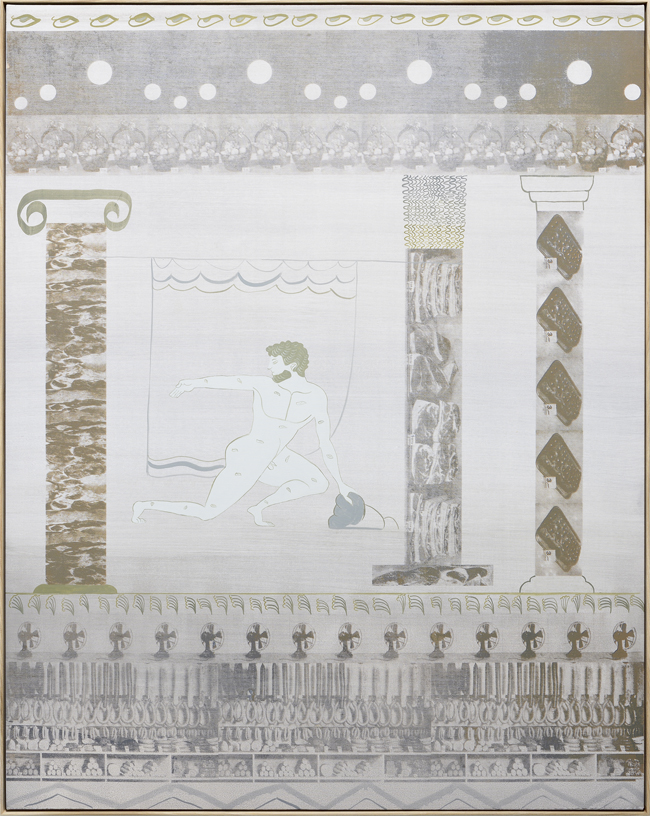
(Fragment.) Inga Meldere. “Joga.” (“Yoga”) 2016. Screen-print, acrylic, oil on canvas. 120 x 95 cm
Secondly, I was interested in looking closely at some themes, which are included in colouring books. They could be homoerotic tales, statements of a political content, or even favourite TV shows and so on. They are usually very detailed and difficult as colouring content. Almost as an offset: colouring books for adults have gained massive popularity in the last few years (the first time this happened was after the second World War) and they have an unexpectedly large demand. For example, precisely these publications made the top three sold books list around Christmas in Finnish bookshops. I was also intrigued to find out, why “consumers” suddenly have such a great urge to colour in again and what is the demographic of these colour-ers (turns out – women after 40). Is it connected with the therapeutic, stress releasing characteristics of the colouring-in process, or is it something more? Is it like a contrast, a resistance, and a kind of running away from the digitalized? A trendy hobby? Is it an attempt to identify with the characters to be coloured in – voluptuous burlesque girls, or sexy Tom of Finland lads? Is it an expression of aggression to colour in one’s most hated politician’s face green and to dab on a moustache?
In preparing for the exhibition, in the creation of my colouring-in story, I used various image resources and their combinations: the reproduction of an ideal body, the body of an athlete from Ancient Greece (referencing modern man’s obsession with a perfect body cult, gym, yoga) trapped in a fly-over of columns, whose marble pattern is nothing more than the web of a meat pile; image fragments from shop-owner hygiene handbooks, published in 1930, which tell of a seemingly pointless repetition of a process and praises a certain routine. I could probably continue like this endlessly.
You use very diverse techniques and methods: different materials and different approaches.
Yes, it might seem that way and it might be true. Whether it’s a video of a coloured waterfall, a piece of fake wall, or a clumsy attempt at painting porcelain – the answer to artworks and the methods used for their creation are always closely harnessed with what’s related to painting and solving the problematic questions that arise in painting.
Did you know what you wanted to exhibit, before you began working on the exhibition? Or did it come with time?
Yes, at the beginning I had a very clear idea of what I wanted, but during the process it changed, which I am glad about. Some things just seemed superfluous and unnecessary.
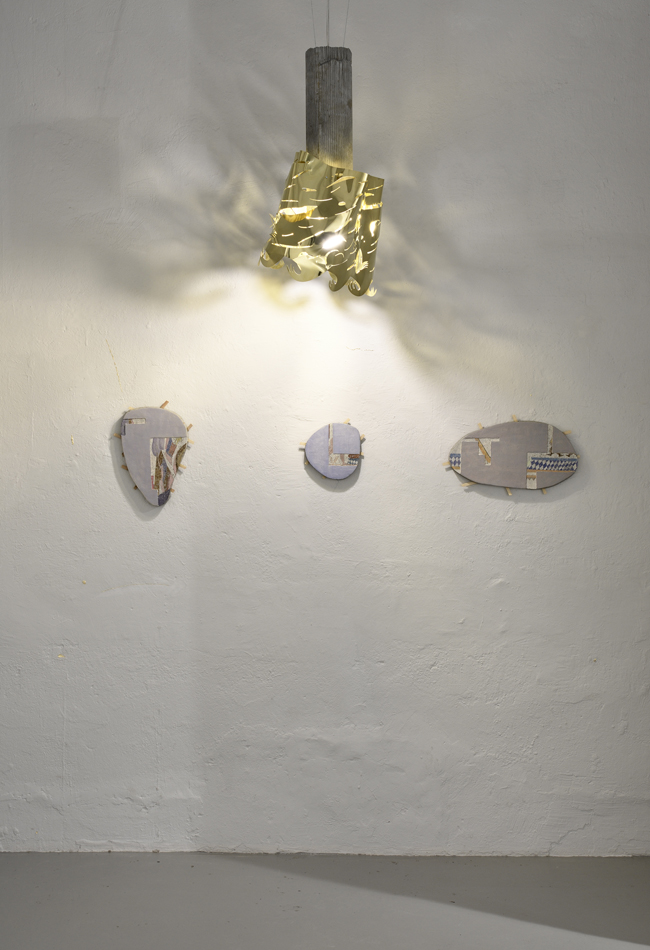
Inga Meldere. Installation with light objects and a group painted object. 2016. Copper, cement, acrylic
How did your collaboration with one of the leading galleries in Estonia and the Baltics – Temnikova & Kasela gallery – come about?
Painter Andris Vītoliņš introduced me to Olga Temnikova a while back. Olga didn’t yet have her own gallery then. She worked at the seemingly no-longer existing ART Depo Art Gallery in Tallinn. The Gallery organized group exhibitions every so often, which sometimes included Latvian artists as well. I was included in one of these. When Olga decided upon her own independent organization, she invited me to be represented by the Gallery. And I am still this day. The Gallery’s fairly sharp advancement can be explained by very determined and relentless work, which has been appreciated internationally as well. The responsibility, with which Olga treats it, to a degree, inhibits also the artists it represents from “slacking” or letting things slide.
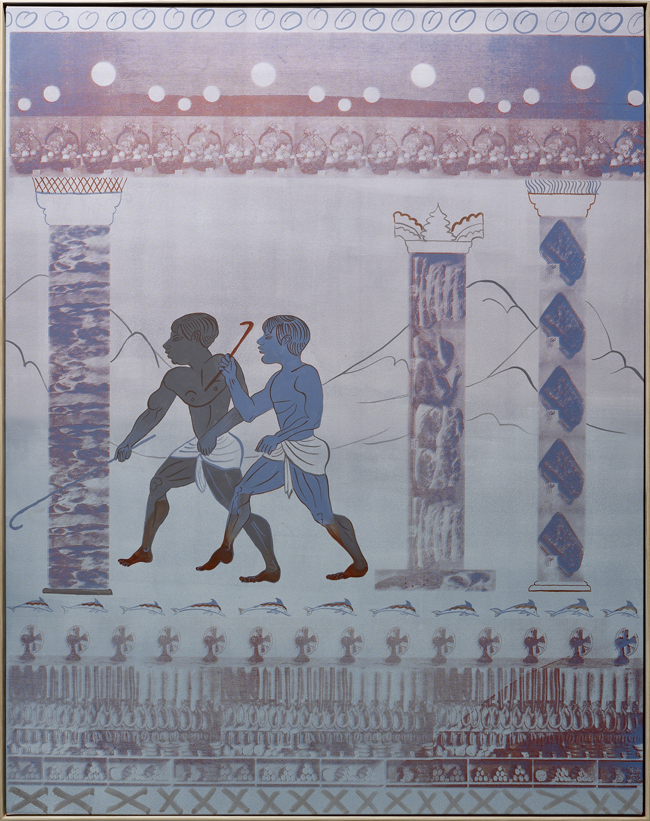
Inga Meldere. Dolphin trainers. 2016. Acrylic and oil on screen-print. 120 x 95 cm
[1] Raphel A. Why adults are buying coloring books (for themselves). The New Yorker (July 12, 2015), retrieved: 10.05.2015